
How We Recovered Ridester from Google’s Helpful Content Update
Learn how we helped Ridester bounce back from a crushing Google update with smarter content, faster UX, and bold pruning that reignited growth.

Project overview
When Google’s Helpful Content Update (HCU) struck in September 2023, Ridester wasn’t ready for the storm.
Almost overnight, the rideshare-focused content hub lost 85% of its traffic, plunging from a healthy 4,600 daily organic clicks to an alarming 650 by early 2025.
The team scrambled, tweaking meta tags and publishing fresh blogs, but nothing moved the needle.
Two major core updates came and went, leaving Ridester stuck in algorithmic limbo. By early 2025, it was clear: half-measures wouldn’t cut it.
We had to rebuild Ridester’s content foundation from scratch. And make sure Google recognized its renewed value.
Here's the story of exactly how we turned things around.
Project execution
To understand how bad things had gotten, let’s rewind.
Before the HCU hit, Ridester was thriving with 23,000 ranking keywords, 1,080 of them top-three results. Post-HCU, keywords were slashed to 9,000 total, with just 120 holding top spots.
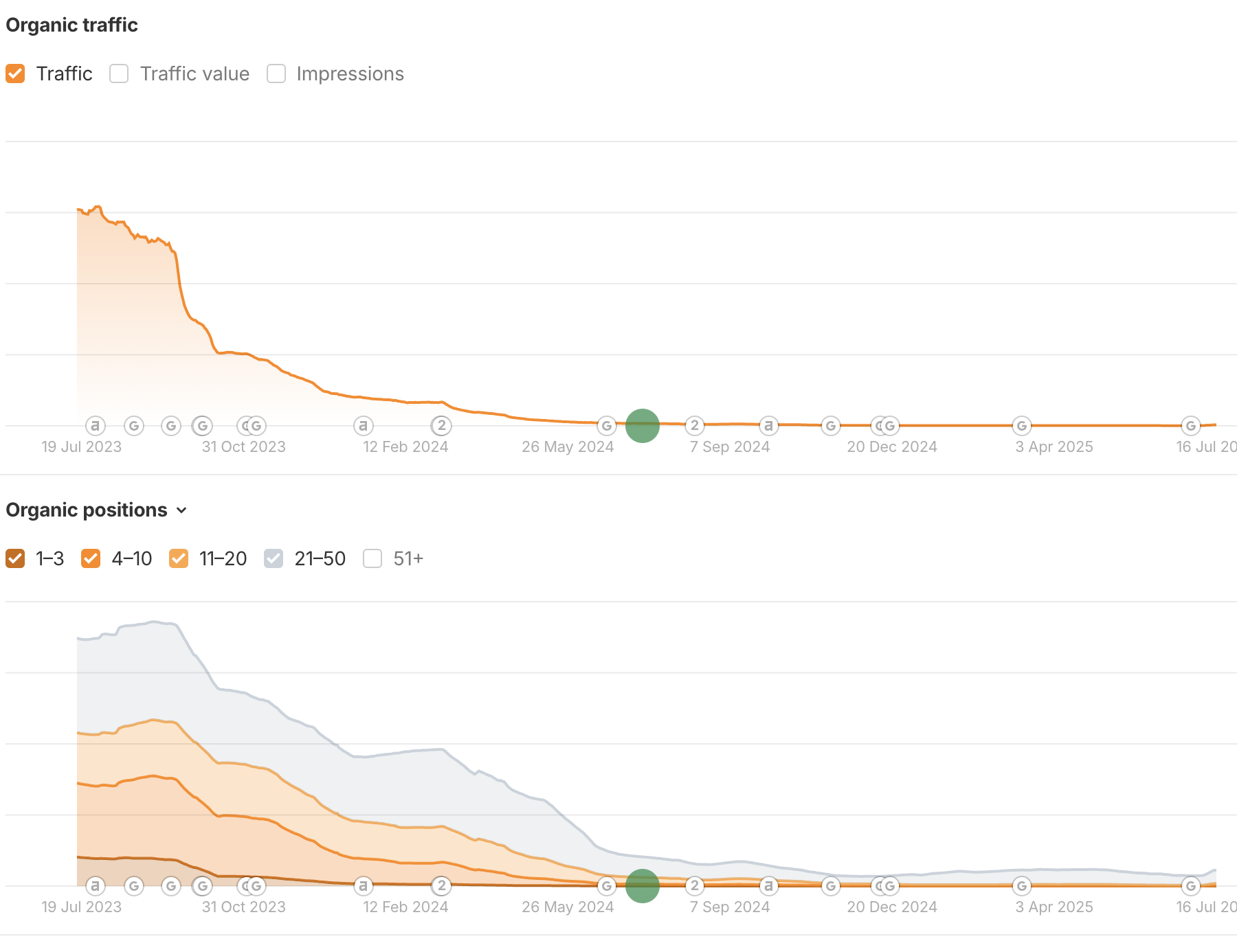
Traffic wasn’t the only casualty. Engagement metrics were sliding, and revenue was teetering due to an over-reliance on dense, intrusive ads.
It was brutal, yes, but also strangely clarifying.
I believed that Google had grouped Ridester’s trustworthy, E-E-A-T-driven content in with low-quality sites. It was classic algorithmic collateral damage.
Yet with nothing to lose, we could finally tackle longstanding issues: content bloat, outdated UX, and an ad-heavy layout dragging down page experience signals (Core Web Vitals were not happy).
Something drastic had to change.
The Big Cleanup: Axing 40% of the Content
First, we launched a full-scale content audit.
When we're diagnosing a traffic drop after a Core Update, this is always the first thing we do.
Using a mix of crawls, Ahrefs gap analysis, and good old-fashioned manual review, we pinpointed roughly 1,000 outdated, thin, or duplicative URLs.
One-by-one, we reviewed the URLS for quality. We found that about 40% of Ridester’s content inventory wasn't up to par, and deleted or no-indexed every single one.
We were left with a list of pages that weren't bad, but also weren't that great. We knew that we needed to improve them, so noted the list and set them aside temporarily.
Once that was done, we consolidated that content into hyperfocused lesson-based hubs.
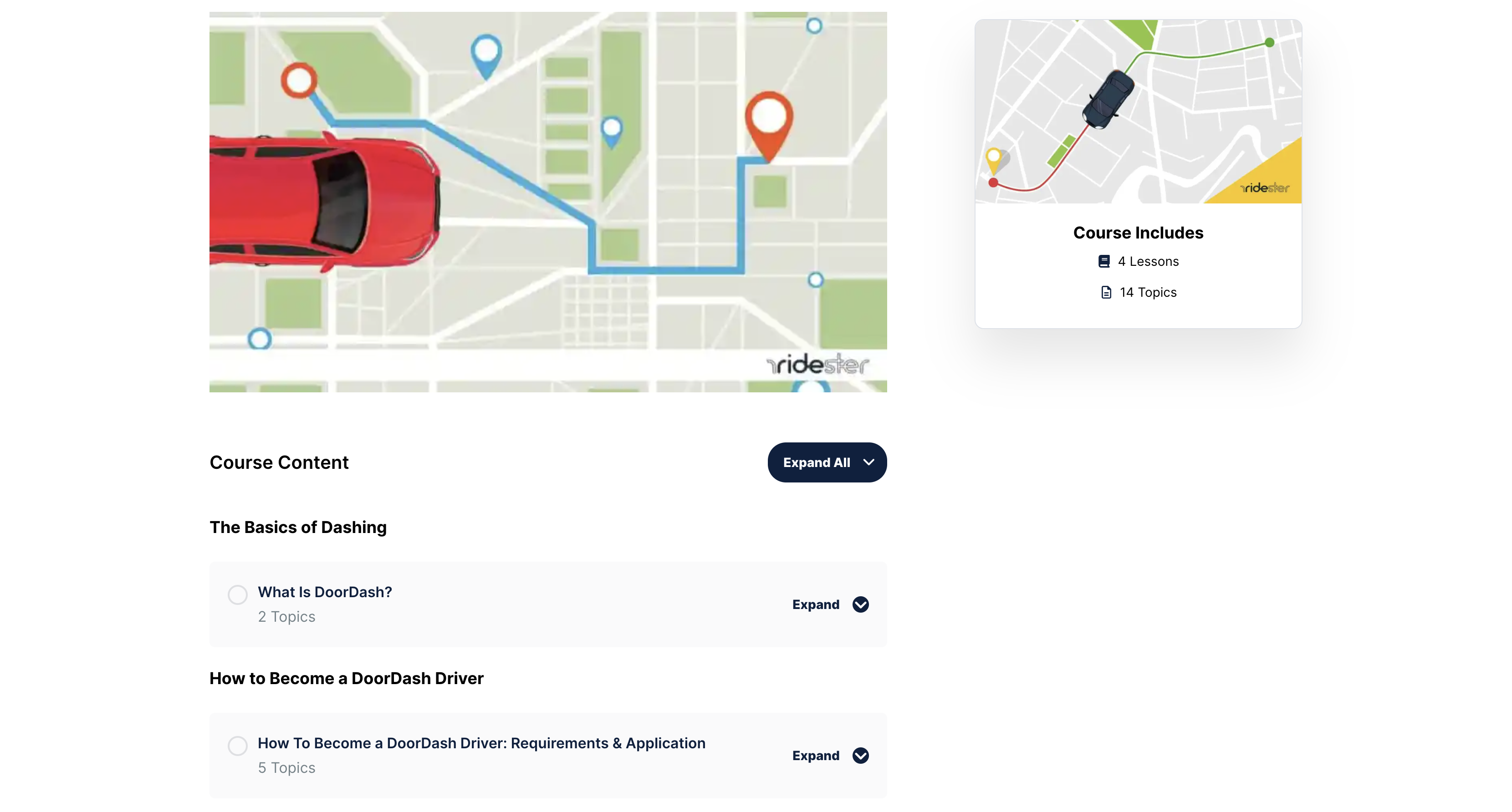
This simplified the content clusters and make our posts easier to find, but also drastically improving topic authority with internal linking.
With the clutter cleared, Google’s crawlers could finally see Ridester for what it was: a lean, expert-driven resource.
Next Up: Deep EEAT Rewrites, Not Fluff
Deleting weak pages was only half the battle. Once we had the structure in place, we needed to improve the content that showed up on the site.
To signal real expertise, we completely rewrote or heavily refreshed the 100 highest-performing pages on the site.
We wanted to not just show E-E-A-T, but actually demonstrate it in our writing and make posts that were more helpful than the competition's.
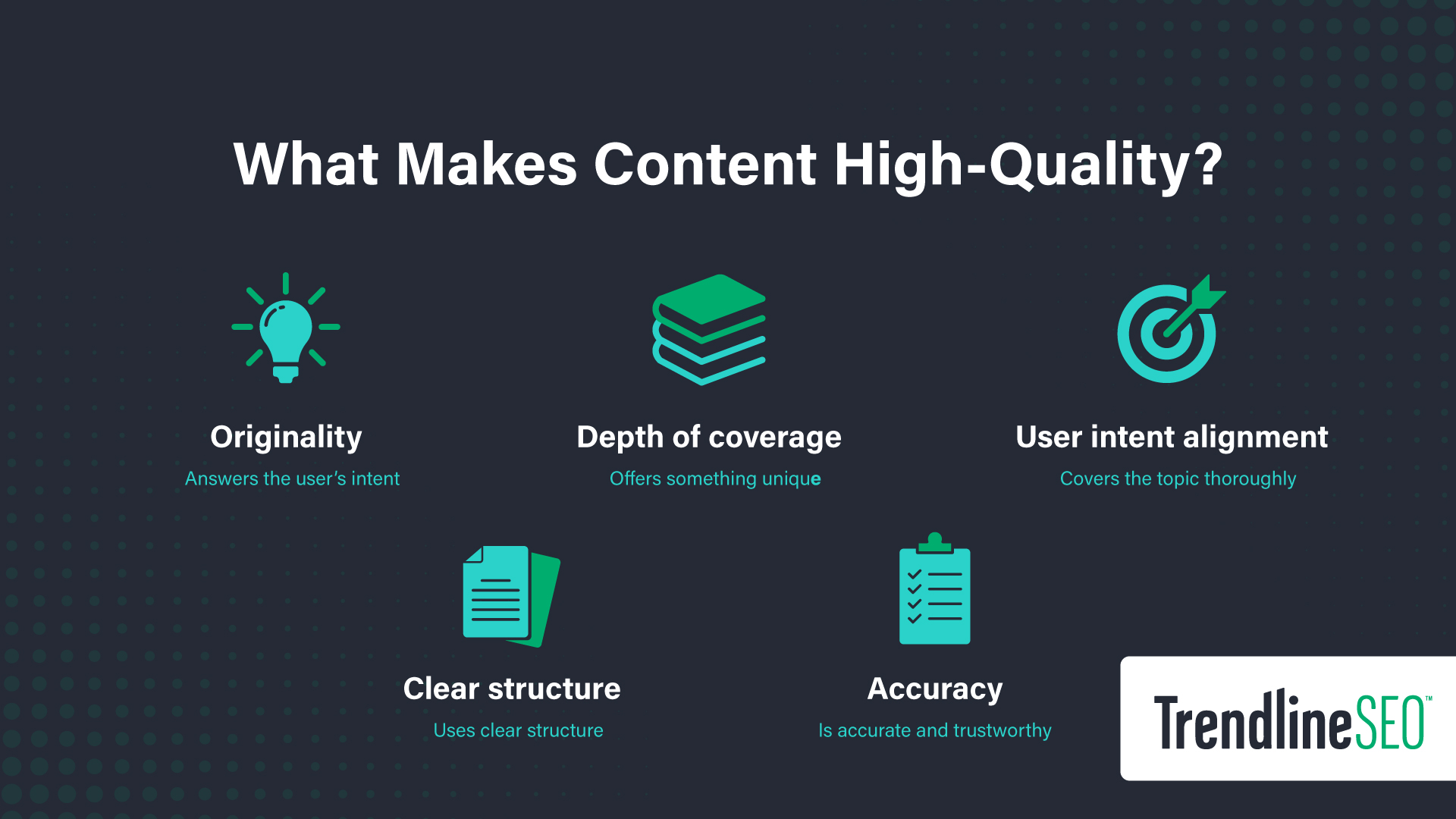
To do so, we followed a structured approach:
- Researched what was ranking and how it was structured.
- Identified where our articles were strong, and where they were weak.
- Manually assembled a content brief for each article.
- Sent the brief to a human writer who shaped the final copy.
Because we did such in-depth research and put together very comprehensive briefs, the writers didn't need to do much.
Expert human writers shaped the final copy, cutting fluff and making the posts engaging and helpful.
Interestingly, the rewrites shrunk average word counts by about 12%.
Turns out EEAT isn’t about length, it’s about real, tangible insight.
There was quiet a bit of unnecessary fluff in the previous versions that we eliminated.
Once the articles were written, we had real drivers add original screenshots of driver dashboards, in-app features and additional insights and tips.
From there, we focused on how that content was being presented on the page.
Ads Took a Backseat & That Paid Off
We knew Google wouldn’t reward content smothered by ads. So, despite some nerves around revenue, we drastically reduced Ridester’s ad density.
The site had been running Adsense, Google's native advertising platform.
Within that, we had previously enabled their "Auto Ads" feature which lets their systems place ads and optimize them for revenue.
I figured since Google goes to great lengths to preach about non-invasive ads, their own platform would place them naturally.
This is not the case. Their system puts them everywhere it possibly can - every post and page, including the homepage.
We cut these down drastically by placing the ad units manually within our posts and excluding over 83 pages from running ads.
We ended up cutting 55% of ad placements, removing sticky banners, and eliminating autoplay videos entirely.
While our RPM took an expected 18% hit, the surge in traffic more than made up for it, stabilizing revenue faster than expected.
Breathing Life into Ridester’s Brand & Community
With the site’s foundation set, we refocused on brand and user engagement.
We dusted off Ridester’s neglected 44,000-subscriber email list, launching a weekly newsletter (“Insider Drive”) and saw open rates spike by 26% almost immediately.
We also added community layers like a forum for drivers to exchange tips and a revamped job board to make jobs easy to browse and find.
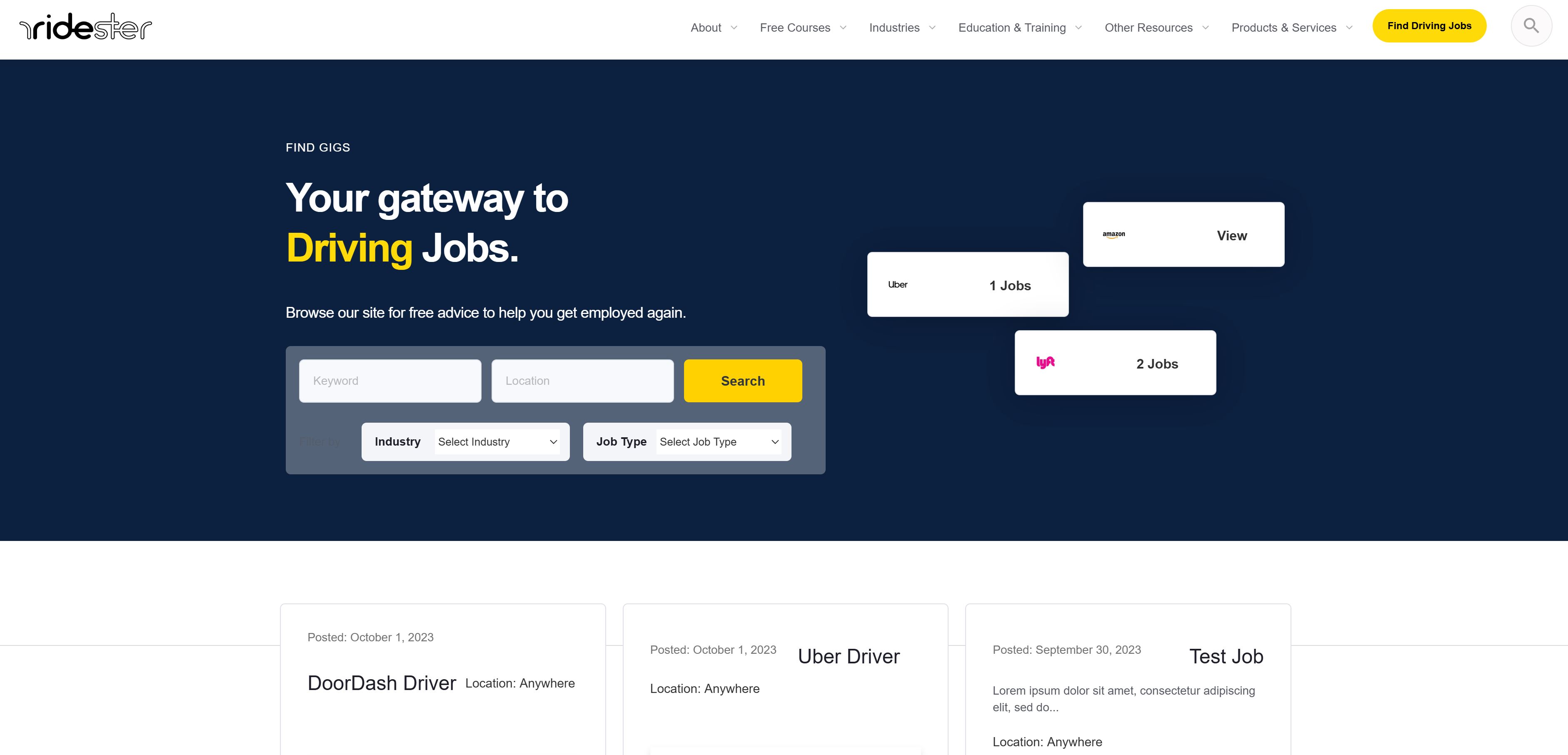
Within each, we added structured data to improve SERP visibility and better position our content to get quoted in LLMs.
Ridester wasn’t just recovering rankings, it was rebuilding trust.
The Technical “Kitchen-Sink” Reset
By the spring of 2024, Ridester’s backend had built up the type of clutter you'd find in a house left untouched for a decade without a yard sale.
Pages became orphaned, links tangled, and technical debt accumulated steadily.
This clutter didn't just slow down the site, it actively blocked Google from recognizing Ridester’s true value.
So our final step wasn't just tidying up, we completely gutted the place.
First, we replaced Ridester’s outdated WordPress theme (a relic from 2018) with something lean, modular, and incredibly fast.
We followed our simple development playbook and built a Figma design library and then pushed those designs to a GeneratePress blocks core.
The result was a fully-custom WordPress theme that performed well and looked great.
Next, we tackled schema markup.
Rather than a quick pass, we significantly expanded structured data coverage with FAQs, How-To snippets, and JobPosting tags.
This gave Google clear, structured signals about Ridester’s core purpose.
Finally, we performed surgical pruning on internal links.
More than 870 orphaned pages were removed, and roughly 15,000 internal links streamlined, directing Google's crawl budget straight toward Ridester’s strongest, most authoritative content.
Google’s bots didn’t just revisit, they fully rediscovered Ridester.
Project results
It took two years of waiting, but eventually our work paid off - big time.
After the June 30, 2025 Core Update, I hopped into the Rank Tracker in Ahrefs and was pleased to see a surge of life in the site.
Google updates can sometimes surge and then drop, so I didn't get too excited right away.
However, after a week, it seems like the update is still looking promising. We're seeing slow growth over time.
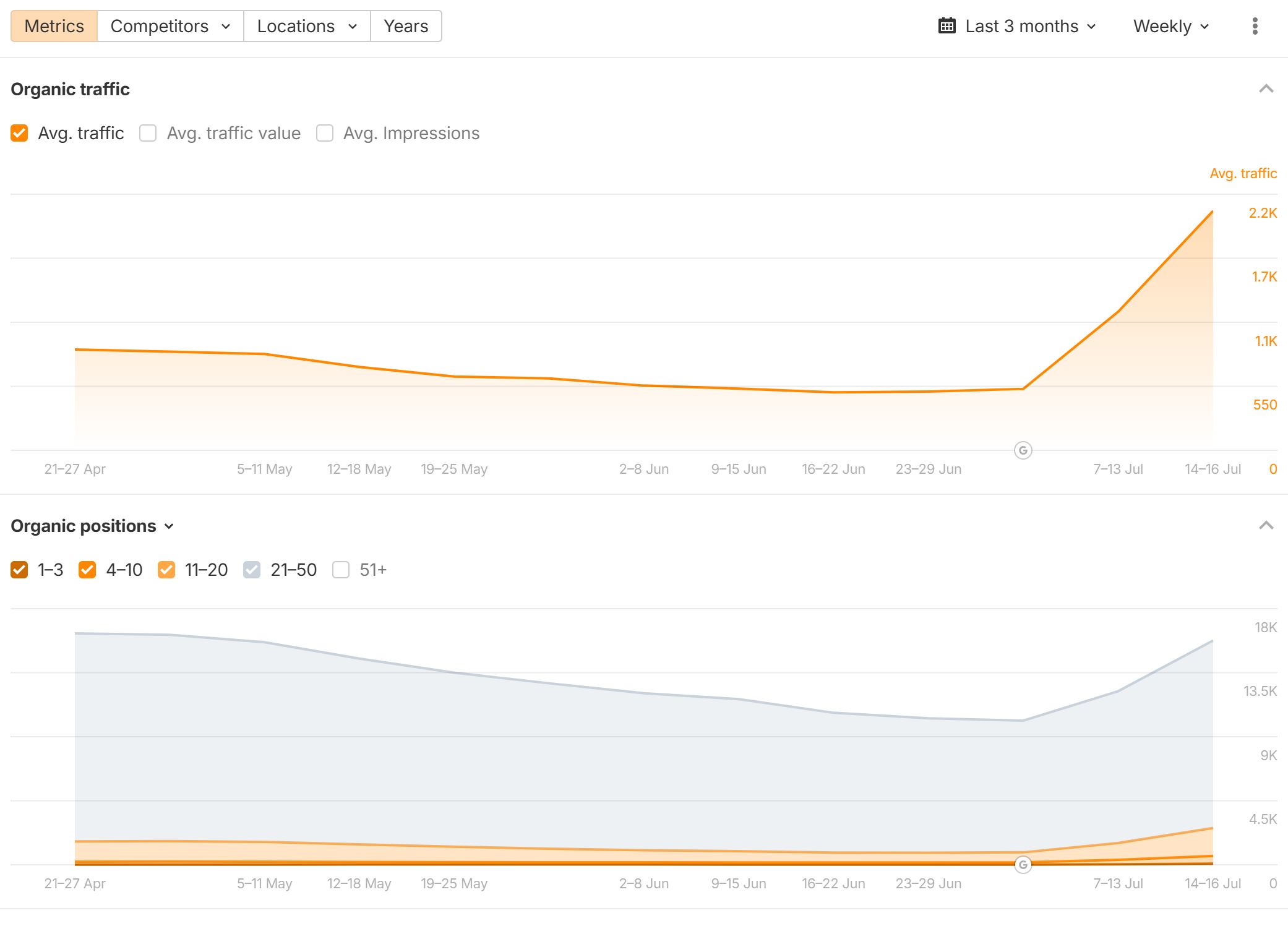
Search Console is also showing something similar: an increase in average position, clicks, and impressions:
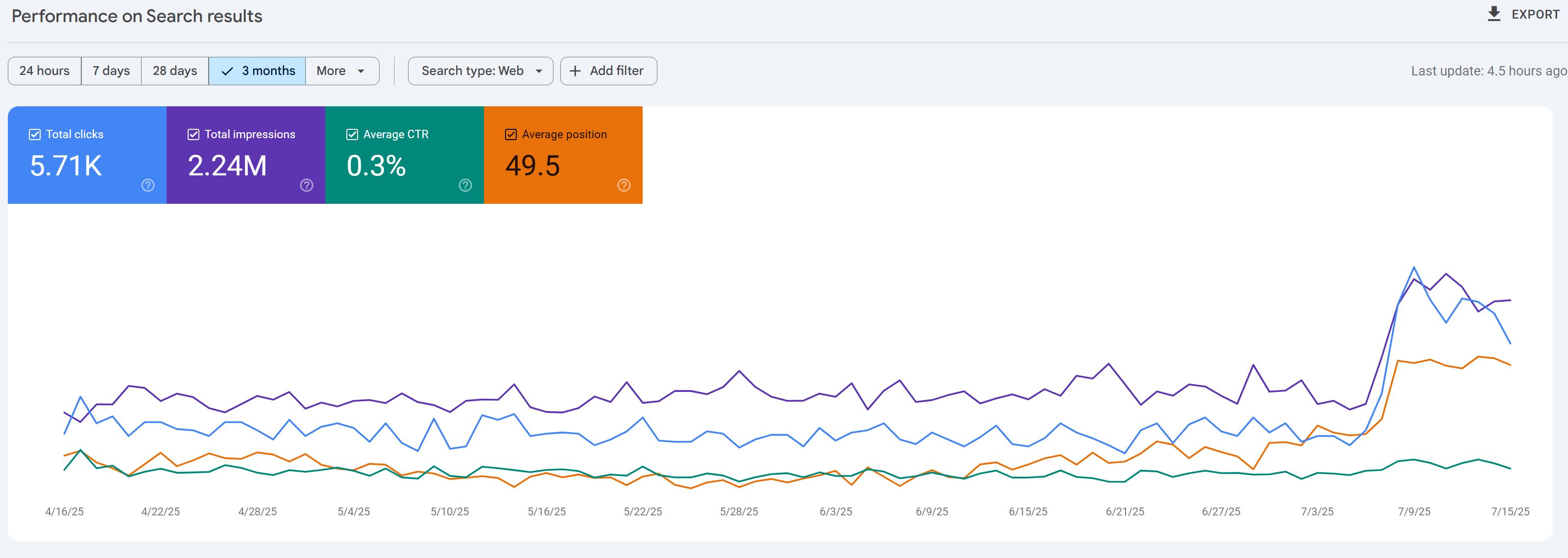
I'm really hoping this will last and they won't take away the results we're seeing from all of our hard work.
But at any rate, there’s an unmistakable satisfaction in seeing numbers to celebrate:
- Organic clicks surged from 4,550 to 11,900 - an eye-popping 162% increase.
- Top-three keywords jumped from 120 to 310 (+190%).
- Average time-on-page lifted by 42%, bounce rates dropped by 17%.
But the real story? It’s in the details.
Take /uber-driver-pay/. Initially buried at position #36, it now sits comfortably at #7.
Boosted by authentic pay-stub images proving EEAT isn't just letters, it's real evidence people (and Google) can trust.
Similarly, /lyft-driver-requirements/ leapt from #28 to #5 thanks to how we thoroughly addressed the information.
Readers weren't just landing on a page, they were finding clear, structured answers right from the SERPs.
And our underdog, /doordash-vs-uber-eats/, rocketed from #45 to #9 after incorporating a smart decision-making matrix, transforming vague comparisons into actionable insights.
Side-by-side SERP screenshots tell the rest of the story. Visual proof of the power of getting the details right.
The Lessons? Real, Clear, and Actionable
Here's the hard truth we learned along the way:
1. Pruning always beats polishing.
No matter how pretty, weak content is still weak. Removing it completely, painful though it may be, is often the fastest path back to relevance.
2. Real E-E-A-T is evidence, not word-count.
Google’s appetite for expertise and authenticity isn’t satisfied by length alone. Original screenshots, genuine credentials, and real-world data outscore fluffy paragraphs every time.
3. Ads don't just irritate visitors - they irritate Google.
Cramming pages with ads doesn’t just push users away; it actively drags down your rankings. Balance monetization with user experience, or risk never recovering from a penalty.
4. Recovery is gradual, not instant.
SEO isn’t a one-update-and-done scenario. Even our big wins came in waves, each Google update rewarding incremental improvements. Patience isn’t just a virtue, it’s essential.
And maybe most crucially:
5. Even good sites get unfairly punished.
Sometimes you do everything right, and algorithms still mistake you for spam. But meticulous, authentic fixes do eventually win out. Ridester is proof.


